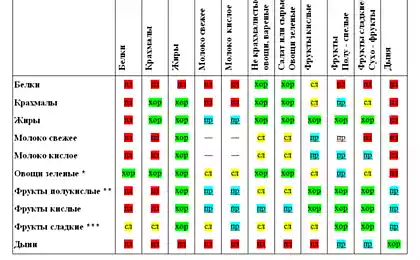582
Fermented food tempeh — useful properties and applications

Pace (eng. Tempeh) fermented food made from soybeans.
Cooking
Tempeh is popular in Indonesia and other countries of South-East Asia. The process of making tempeh is similar to the fermentation process of the cheese. Tempeh is made from whole soybeans. Soy beans are softened, and then revealed or cleared from the husks, and cooked, but not cooked. Then you add an oxidizer (usually vinegar) and a starter culture containing beneficial bacteria. Under the action of these bacteria obtained fermented product with a complex odor, which is compared with a nutty, meat or mushroom, and tastes like chicken.
At low temperature or increased ventilation on the surface of pace sometimes there are disputes in the form of harmless gray or black spots. This is normal and does not affect the taste and smell of the product. High-quality ready-the tempo has a slight odor of ammonia, but this smell must not be very strong.
Usually the pace is available in briquettes with a thickness of about 1.5 cm Pace belongs to the category of perishable goods and cannot be stored for a long time, so it is difficult to find outside of Asia.
Useful properties and applications
In Indonesia and Sri Lanka pace consumed as a staple food. Tempeh is rich in protein. Due to the fermentation in the process of making protein from tempeh easier to digest and absorbed by the body. Tempe – a good source of dietary fiber, as it contains large amount of dietary fiber unlike tofu which fibers are absent.
Often cut into slices tempeh fried in vegetable oil with the addition of other products, sauces and spices. Sometimes the pace is pre-soaked in brine or salty sauce. It is easily prepared: the preparation takes only a few minutes. Mesopotamia structure allows you to use tempeh instead of meat in burgers or the chicken salad.
Ready pace served with a garnish, in soups, braised or fried dishes, and also as a separate dish. Because of the low caloric pace used as a dietary and vegetarian dish.
Composition
Pace contains a number of beneficial microorganisms, typical of fermented products that inhibit bacteria. Moreover, it contains phytates, which come into contact with radioactive elements and eliminate them from the body. Pace, like all soy products are very rich in protein and dietary fiber. In the fungal culture used in the production process pace, contain bacteria that produce vitamin B12, which inhibits the absorption of radioactive cobalt.
A curious fact
Tempeh, like other soy products are bad combined with all protein foods of animal origin and animal fats, but combine well with fish and seafood. Do not eat soy products together with other legumes.
Calorie pace
The caloric value of the temp from 90 to 150 kcal per 100 g depending on the method of preparation.
источник:lady.mail.ru
Source: /users/1077
A touching story of a blind cat Honey Bee
Neurons enlightenment —what happens to the brain when you meditate























